How to Write Quality SEO Content and Optimize It for Search Engines
In 2022, it’s not fair to say that content is king.
As Google launches one update after the other, the bar is set so high that we can’t even see it anymore!
Content isn’t king anymore.
Instead, quality SEO content is king.
If you churn out subpar content, it’ll float around the web without reaching the right people.
Bad rankings, minimal traffic, and upsetting sales.
The content card won’t get you anywhere.
But if you create quality SEO content and optimize it for Google, you’ve hit the jackpot.
As you check off all the boxes Google has set forth, the algorithm will put you in its good books.
Great rankings, impressive traffic, enviable sales.
Sounds like a plan?
In this blog, we’ll help you take the leap from humdrum content to quality SEO content.
Let’s put you in the big leagues.
Keep reading!
What is Quality SEO Content?
Before we jump into the bulk of this blog, let’s quickly understand the difference between regular content and quality SEO content.
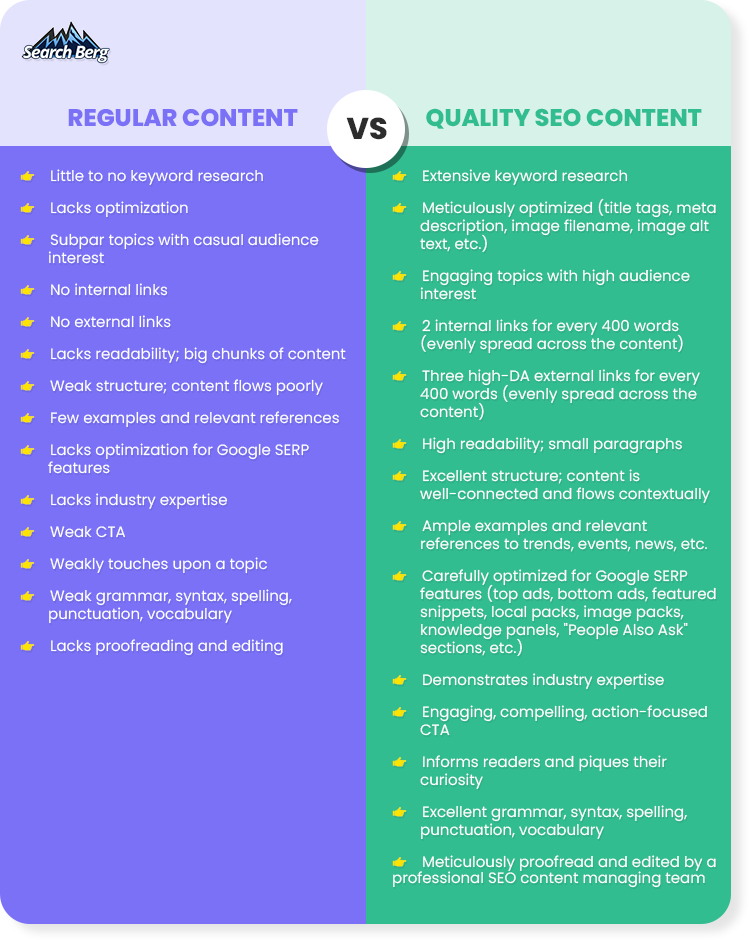
Catch our drift?
There’s a reason why certain content makes it to the top Google SERPs while other content completely lacks visibility.
The whip-smart Google algorithm decides who makes it to the top and who doesn’t.
If you churn out regular content, it’ll remain stuck on two-digit or perhaps even three-digit SERPs.
As you optimize your content for Google, up the quality, and cover all the required ground, you’ll climb SERPs and get the most bang for your content buck!
Content Optimization for Google: Your Go-To Checklist
1. Keep an Eye Out for Algorithm Updates and SERP Features
As a marketer, you must remember that your content will be posted on Google.
Yes, you should write for your target audience.
But don’t forget that your content will ultimately float around the Googleverse.
If you don’t keep up with Google’s algorithm updates and SERP features, you’re setting yourself up for failure.
Google is known for launching new updates and tweaking its algorithm every other month.
And this is what’s made known to us!
We can imagine that a lot, lot more goes on behind the scenes on a regular basis.
If you want your content to make it to the top, understand what Google wants.
Google Search Central is your best friend.

Click on the “What’s New” tab to keep up with just about everything Google wants to share with us!
We also recommend keeping up with the Google Search Central Blog for rich insight into core algorithm updates, SEO best practices, new features, announcements, and so much more.
What does this have to do with content?
Google recently launched a new content update and wrote a comprehensive blog about what it entails and how marketers can use it.
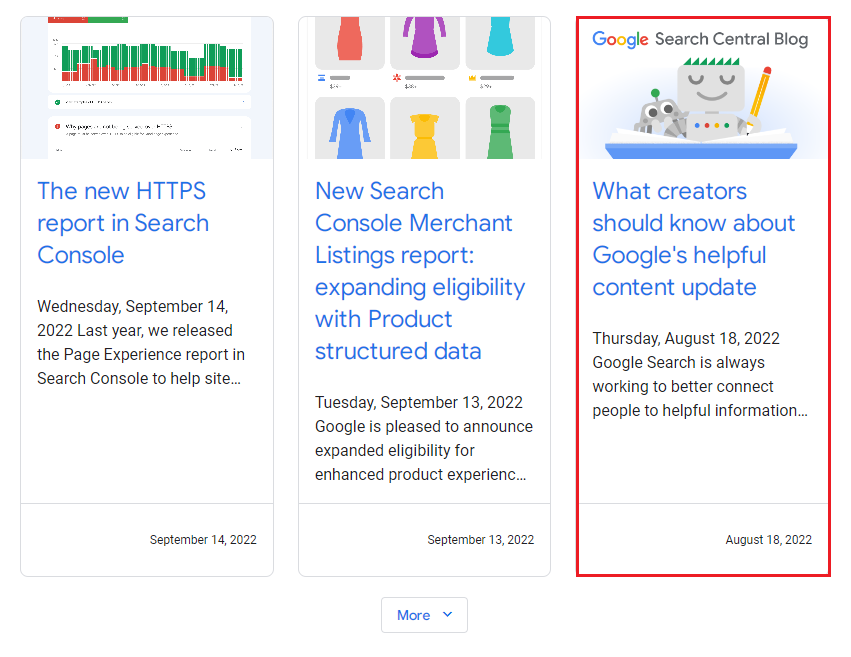
As you keep up with the landscape, you’ll develop a nuanced understanding of the type of content you’re expected to produce.
You’ll also stay on top of relevant updates, which will help you tweak your SEO content writing and optimization plan accordingly.
Let’s talk about SERP features real quick.
Content doesn’t just show up as conventional search results anymore.
Google has upped its game immensely.
Today, you’ll find a ton of cool new features on SERPs: top ads, bottom ads, featured snippets (recipes, lists, etc.), “People Also Ask” sections, knowledge panels, local packs, image packs, top stories, and so on.
These features include content.
You’ll gain more traction as you carefully optimize your content for the specific features you’re targeting.
Optimize your images with filename and alt text if you want to make it to the image pack.
If you want to sneak a spot in the “People Also Ask” box, use the relevant questions as keywords and answer them as accurately as possible.
And if you want to make your way to the snippets, use structured data to optimize your content.
Avoid writing generic content.
As you write and optimize purposeful content, you’ll make your way to the right Google features and make a bigger splash!
2. Write for Your Audience
You’ve heard this many times.
But no matter how often we address it, it’s not enough.
Quality SEO content is researched and written for the target audience.
Remember, you’re optimizing your content for Google.
But you’re not researching and writing it for Google.
During those critical stages, keep your audience in mind through and through.
And Google reiterates this in their recent update!
There’s a reason why Google’s still doubling down on this in 2022.
At this point, everyone’s tired of hearing it, but it must be said that marketers are still making this mistake.
Google has earned a godlike status in the online marketing world, so much so that people often start doing everything to appease Google.
Remember, Google isn’t buying your products/services. People are.
Sure, you have to master the art of optimization if you want to get seen on Google SERPs.
But before that, research and write content for people, more specifically, your target audience.
Want to understand how to do that?
The Verge’s latest blog on iPhone 14 is a kickass example of how to write for your audience.
Why are we obsessed?
Because it’s not overly technical.
They know actual humans are behind the screen, not the Google algorithm.
The conversational tone, laidback style, and honest review make this a winner through and through.

Whether you’re writing an article, blog, guest post, or press release, keep your audience in mind from the get-go.
As you research topics, ask yourself whether your audience will enjoy reading about them.
As you write content, keep your target audience’s preferences in mind.
If you sell acne-clearing products, you’re targeting teenagers and young adults.
Your content must be conversational, fun, Gen-Z-friendly, and witty.
On the flip side, if you run a legal firm, your target audience wants serious content written formally.
You can’t get away with a witty pun or a facetious quip in the middle.
Understand your audience and create content that resonates with them.
Recommended Read: Writing Content for SEO: 6 Mistakes to Avoid
3. Keywords Are Even More Important Than You Think
“They’re at it again?”
We get it.
We’ve emphasized the importance of keyword research one too many times.
But only because it’s pivotal.
More pivotal than you may think!
The right volume of the right keywords will help you get seen on Google.
It’ll help your content stand out from the crowd and make it to the top SERPs.
Google Keyword Planner is your go-to tool when it comes to this.
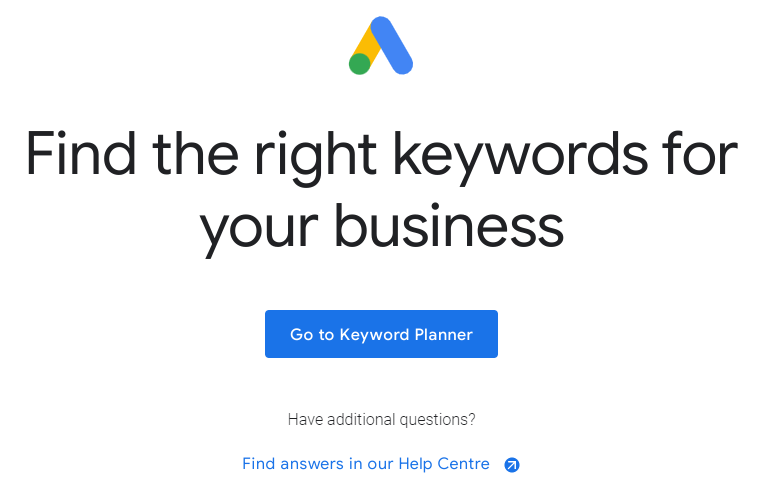
The smart tool helps marketers find industry-relevant keywords with high search volume and high search intent.
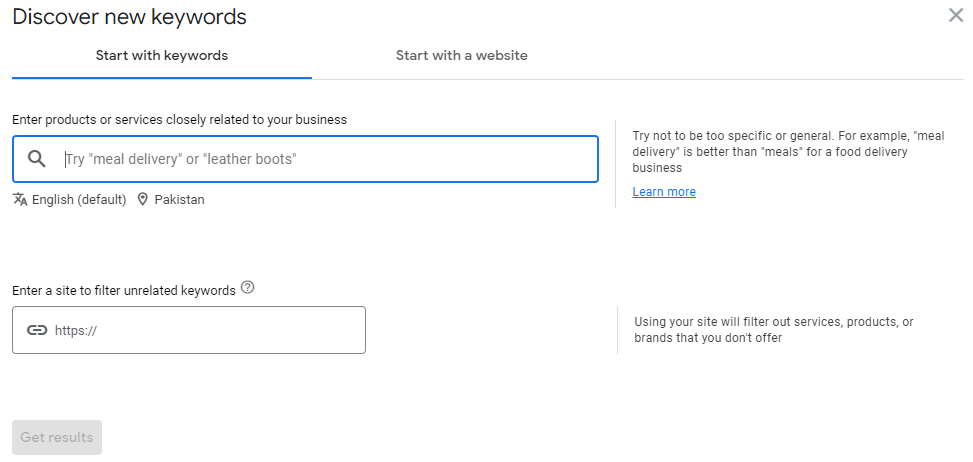
You’ll also get comprehensive metrics that help you understand how your top keywords are performing and which keywords you should target next.
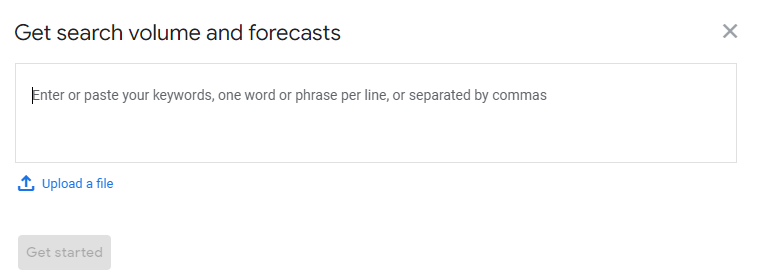
Sweet, right?
While we love Google Keyword Planner, we believe it lacks comprehensiveness.
It’s an excellent tool for beginners.
But as your content picks up, consider switching to a more robust, comprehensive tool that fetches detailed insights.
At Search Berg, we use proprietary keyword research and analysis tools to help your content rise to the top.
If you’re tackling content for the first time, turn to Google Keyword Planner.
Once you get the hang of things, come to us for more aggressive keyword work that gives you a power-packed boost in visibility.
4. Link Strategically
In 2022, every marketer wants quality backlinks.
Why?
If you want a volcanic eruption of new traffic and rosy new rankings, link building is the way to go.
But marketers often get so carried away that they start linking haphazardly, not strategically.
Too much of anything is bad, especially if it’s done chaotically with little to no planning.
If you go overboard with keywords, Google will penalize you.
If you stuff your content with internal and external links, your rankings will drop.
No matter which SEO technique you use, use it strategically and smartly.
The same goes for link building.
Sure, stuffing your content with a ton of high-DA links sounds like a great idea, right?
It’s not.
The same goes for internal links.
If you go overboard, your audience will feel like you’re being too pushy and aggressive with previous content.
Provide relevant links in moderation.
Follow our golden rule: 2 internal links and 3 external links for every 400 words of content.
Additionally, keep these practices in mind:
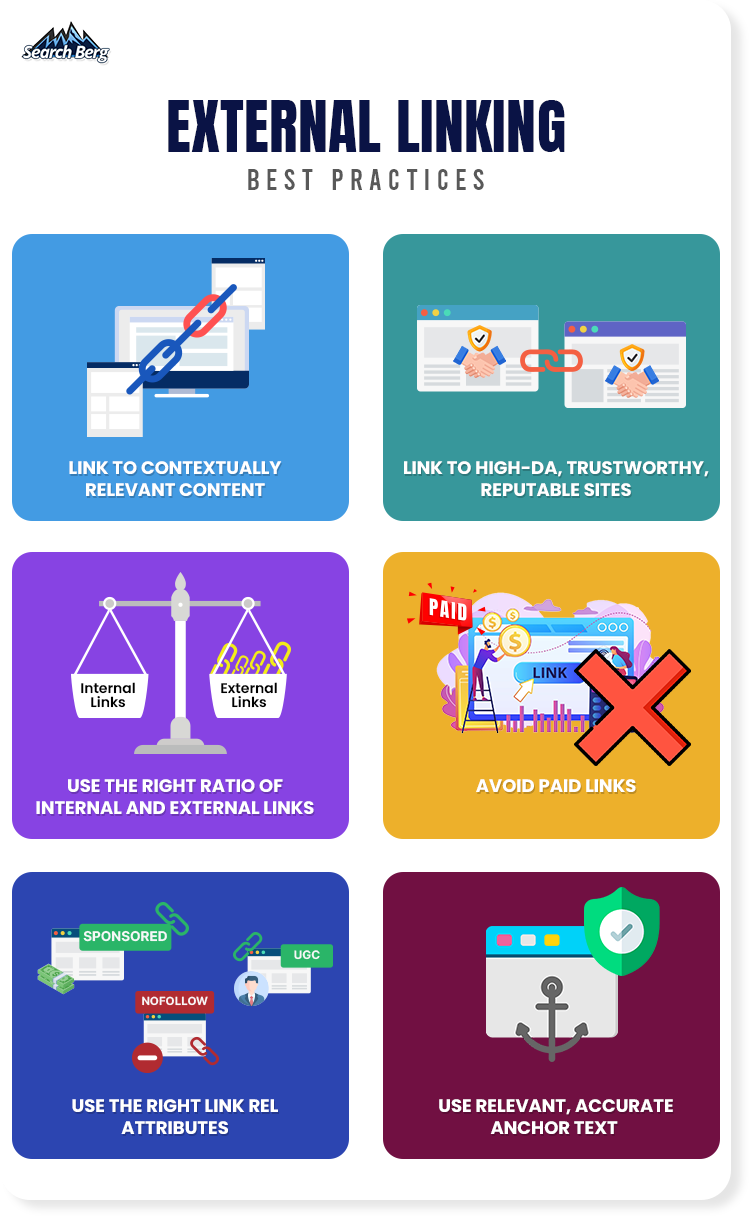
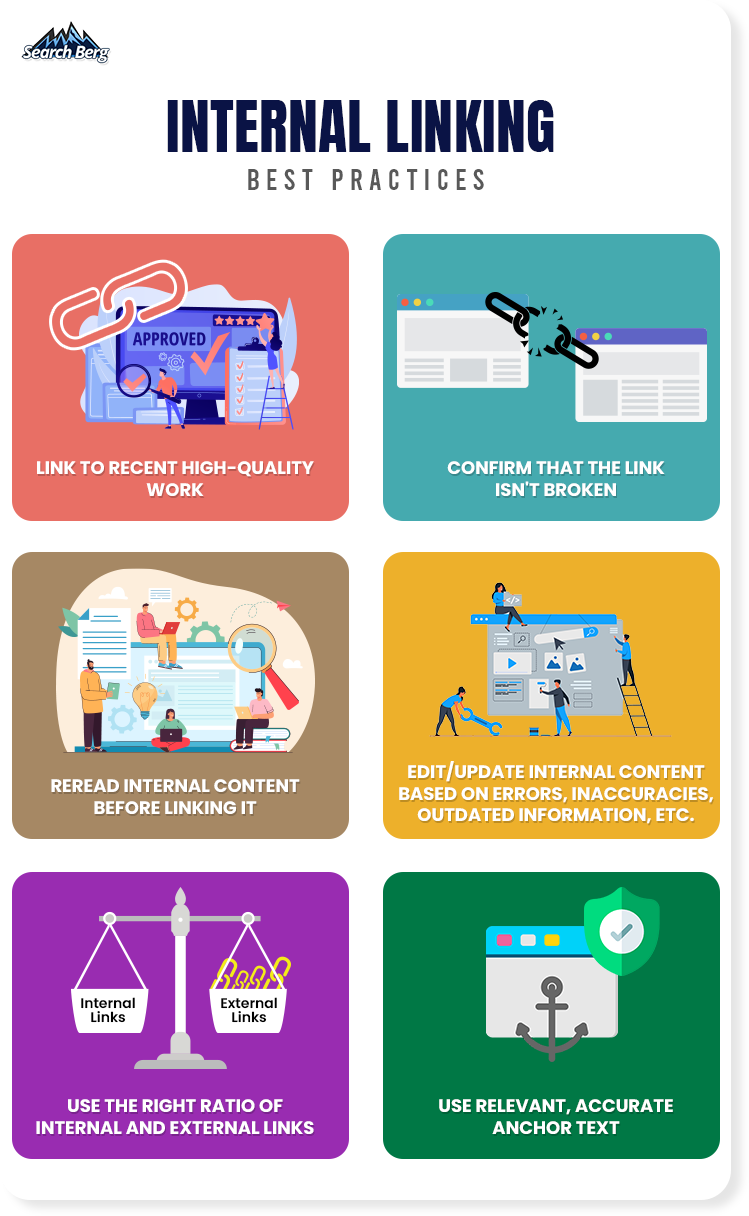
Link mastery will help your content perform better.
This content optimization trick also helps improve user experience.
The outcome?
A loyal, consistent base of readers.
You’ll retain existing readers and engage more web users based on the quality reading experience you provide.
As long as you use quality links in moderation, you’re on the right track.
Recommended Read: 5 Types of SEO Content That Pull Links Like Crazy
Play Your Content Cards Right
In this blog, we walked you through the top SEO content writing techniques.
We also helped you get the hang of content optimization for Google.
Now that you’re seated with the right content cards in your hands, it’s time to play them well.
That’s what we’re here for!
At Search Berg, we’re committed to helping up-and-coming businesses succeed with the power of quality SEO content.
We create all types of content: articles, blogs, press releases, product pages, service pages, business plans, guest blogs, regional pages, and so much more.
It’s time to equip your site with value-added, optimized, engaging, and industry-specific content that wins your audience over!
It all starts with Search Berg.
Explore our SEO content writing services to kick things off!
If you have any questions, talk to our content specialists today.
Let’s get your business in the big leagues the Search Berg way!














